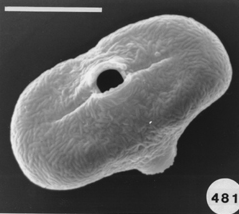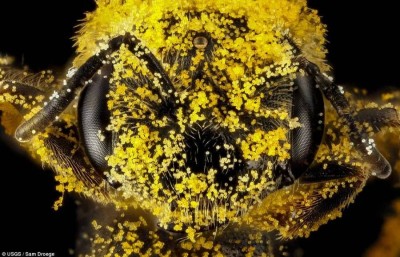Palynology is the “study of dust” . A classic palynologist analyses particulate samples collected from the air, water, or from deposits including sediments of any age. The condition and identification of those particles, organic and inorganic, give the palynologist clues to the life, the environment, and energetic conditions that produced them. wikipedia.
At Sony CSL in Tokyo I meet Masatoshi Funabashi. Masa is an expert in complex systems relations in ecologies. We talk about flowers and insects, and we decide to work with honeybees (among other insects) to collect usefull information on the ecosystem. The bees will work as interface/sensor for gathering environmental information via the pollen they collect. In my wiki, I start with a pollen database.
June 2013 Masa and me decided to work on a joined research project that investigates the link between insects, pollen and ecosystems. We will set up a database and compare pollen -straight from the plant- with pollen brought back by honeybees to the hive. With pattern recognition software we hope to collect information about the ecosystems foraged by the honeybees.
We will work with the software ELFE to discover emergent patterns in a multitude of pollen pictures.
In philosophy, systems theory, science, and art, emergence is the way complex systems and patterns arise out of a multiplicity of relatively simple interactions. Emergence is central to the theories of integrative levels and of complex systems.
I am completely fascinated by the aesthetical forms of the pollen grains. The more I research, the more I want to work with sophisticated machines to study the material. With the help of Professor Luc Steels I can work at the VUB in the chemical engineering Lab, where they have several SEM – scanning electron microscopes. Working on these machines a complete new world is opening up.

